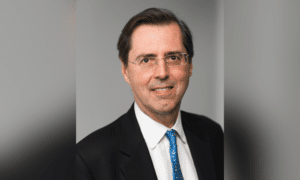$7.4T ETF Industry Is Littered With One-Hit Wonders

What You Need to Know
The ARK Innovation ETF (ticker ARKK) has 52% of the firm’s asset base; it’s shrunk from $28 billion to $7 billion over the past two years.
Even well-diversified issuers are pruning their lineups: BlackRock last week announced plans to close five funds.
At the same time, giants BlackRock and Vanguard Group, the two largest ETF issuers, boast some of the best-diversified lineups.
The $7.4 trillion ETF world is wrestling with a unique strain of concentration risk: some of the biggest issuers are reliant on a single product for the bulk of their success.
At least 28 firms — that run eight funds or more — have a minimum of 40% of their entire asset base in a single product, according to data compiled by Bloomberg Intelligence.
Heavyweights including Invesco Ltd., ARK Investment Management and Pacific Investment Management Co. are among the managers with the most concentrated lineups.
The number is even higher when taking into account companies that have just a handful of products, which in the ETF space isn’t uncommon as funds can sometimes catch fire during historic market events or thanks to big marketing campaigns.
A single product can power growth on an upswing. Take, for instance, ARK Investment Management’s star innovation ETF that catapulted Cathie Wood to the top active-manager slot in 2021 following a tech runup.
But the reliance on one fund potentially leaves issuers vulnerable to losing share when the market turns against it, which happened with ARK.
“It’s about being able to weather different storms,” said BI’s Athanasios Psarofagis. “You’re really dependent on one product, and if, for whatever reason, that product is in a model and everyone is flocking into it, and all of a sudden that trade flips, do you have something else to counter that weight?”
Shrinking Lineups
The issue also touches on an important trend within the industry: the whittling down of bloated lineups. So far this year, 156 funds have shuttered, on pace for the most since 2020, data compiled by Bloomberg show.
Even well-diversified issuers are pruning their lineups: BlackRock Inc. last week announced plans to close five funds.
Examples of super-high concentration abound among industry nobility. Nearly 50% of Invesco’s ETF assets under management lie with its Invesco QQQ Trust Series 1 fund, or QQQ, a $194 billion fund tracking the Nasdaq 100.
“Invesco has a robust suite of over 200 ETFs in the U.S., covering a wide array of strategies designed for many different market and economic environments,” said Anna Paglia, global head of Invesco ETFs and Indexed Strategies. “In fact, year-to-date, along with QQQ and QQQM, the ETFs that are gathering the largest inflows are factor strategies like OMFL, SPHQ and SPGP, diversification plays like RSP, as well as intelligent income strategies like BSCP.”
Another example is Pacer ETFs, which runs more than 40 funds. It has roughly 55% of its assets under management with the $14 billion Pacer US Cash Cows 100 ETF (COWZ). The company didn’t return a request for comment.
But the trend is even more prevalent among smaller firms.





